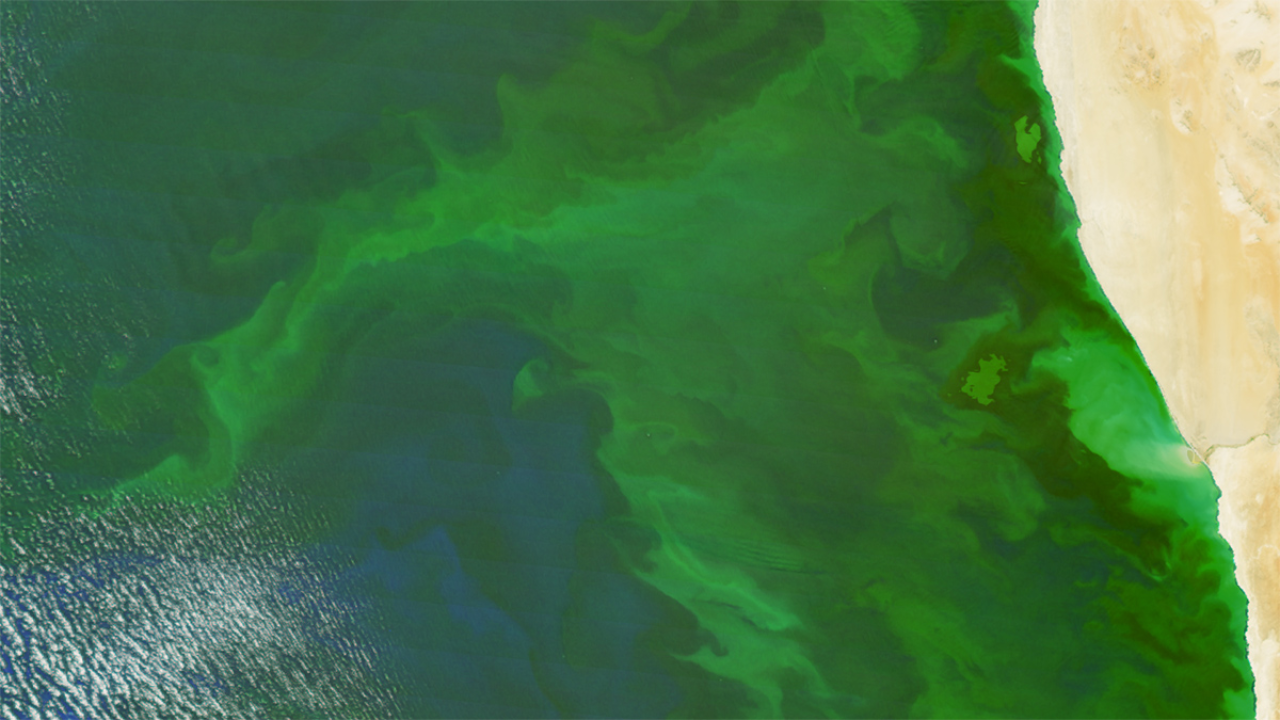Evident Sign of Climate Change: Changing Color of the Oceans
Scientific research has revealed that in the past 20 years, the color of the oceans has been changing rapidly. According to NASA satellite data analysis, areas that once showed blue water are now experiencing an expansion of green color, especially notable is the increase in greenness in polar regions and a rise in blueness in tropical regions.
Phytoplankton: The Foundation of the Marine Food Chain
Phytoplankton are microscopic algae considered the base of the marine ecosystem. These marine organisms perform photosynthesis and produce a green pigment called chlorophyll. Their increasing numbers are responsible for giving the ocean water its green color.
Ecological role of phytoplankton:
They act as primary producers.
They contribute about 50% of the global oxygen production.
They form the base of the marine food chain.
They play a significant role in the carbon cycle by absorbing carbon dioxide.
Climate Change and Rising Ocean Temperatures
Due to increasing ocean temperatures, phytoplankton populations are rapidly growing. Scientific studies indicate that marine heatwave events have increased by up to 50% in the last decade. These increases are influenced by factors such as:
Warming of ocean waters due to global temperature rise.
Increased nutrients from melting glaciers.
Changes in ocean stratification.
The Threat of Harmful Algal Blooms
When phytoplankton numbers exceed natural balance, they cause harmful algal blooms with serious consequences.
Impact on the marine ecosystem:
Fish die-offs due to oxygen depletion.
Formation of dead zones where marine life cannot survive.
Production of toxic compounds that affect the marine food chain.
Impact on human health:
Skin and respiratory allergies.
Ciguatera fish poisoning—one of the most reported seafood poisoning worldwide.
Impacts on the fishing industry leading to livelihood loss for millions.
Satellite Monitoring and Scientific Research
The European Space Agency’s Copernicus Sentinel-3 satellite monitors ocean color. NASA’s PACE mission (Plankton, Aerosol, Cloud, ocean Ecosystem), launched in 2024, uses hyperspectral imaging to extensively study marine ecosystems.
Scientific findings:
Significant changes observed in 40% of the global ocean surface during 2003-2022.
The northern hemisphere experienced the highest level of change.
Twenty years of data corroborate indicators of climate change.
Ocean Acidification and the Carbon Cycle
Ocean acidification is another serious issue affecting phytoplankton communities, with atmospheric CO₂ increases reducing ocean pH by an estimated 0.3-0.4 units.
Effects:
Impairment in calcium carbonate formation.
Coral reef bleaching.
Disruption of the marine food chain.
Impact on the Fishing Industry
Changes in ocean color have a profound effect on the global fishing industry. Alterations in phytoplankton distribution lead to:
Changes in natural fish habitats.
Displacement of traditional fishing zones.
Economic challenges for coastal communities.
Future Challenges and Solutions
Along with climate change, harmful algal bloom incidents are expected to rise. Addressing this requires:
Continuous monitoring of marine ecosystems.
Development of early warning systems.
Reduction in carbon emissions.
Strengthening coastal management strategies.
Why this matters for your exam preparation
This topic is highly important for UPSC and other competitive exams because:
For General Studies Paper-3:
Environment and Ecology – Changes in marine ecosystems.
Climate Change – Causes, impacts, and solutions.
Science and Technology – Satellite monitoring systems.
From the perspective of current affairs:
Global environmental challenges.
Sustainable Development Goal (SDG 14 - Life Below Water).
India’s Blue Economy initiative.
Potential question areas:
Ecological role of phytoplankton.
Causes and effects of ocean acidification.
Issues related to harmful algal blooms.
Marine indicators of climate change.
For essays and mains examination:
"Climate change and marine ecosystems."
"Impact of human activities on marine environment."
"Coastal security and environmental challenges in India."






